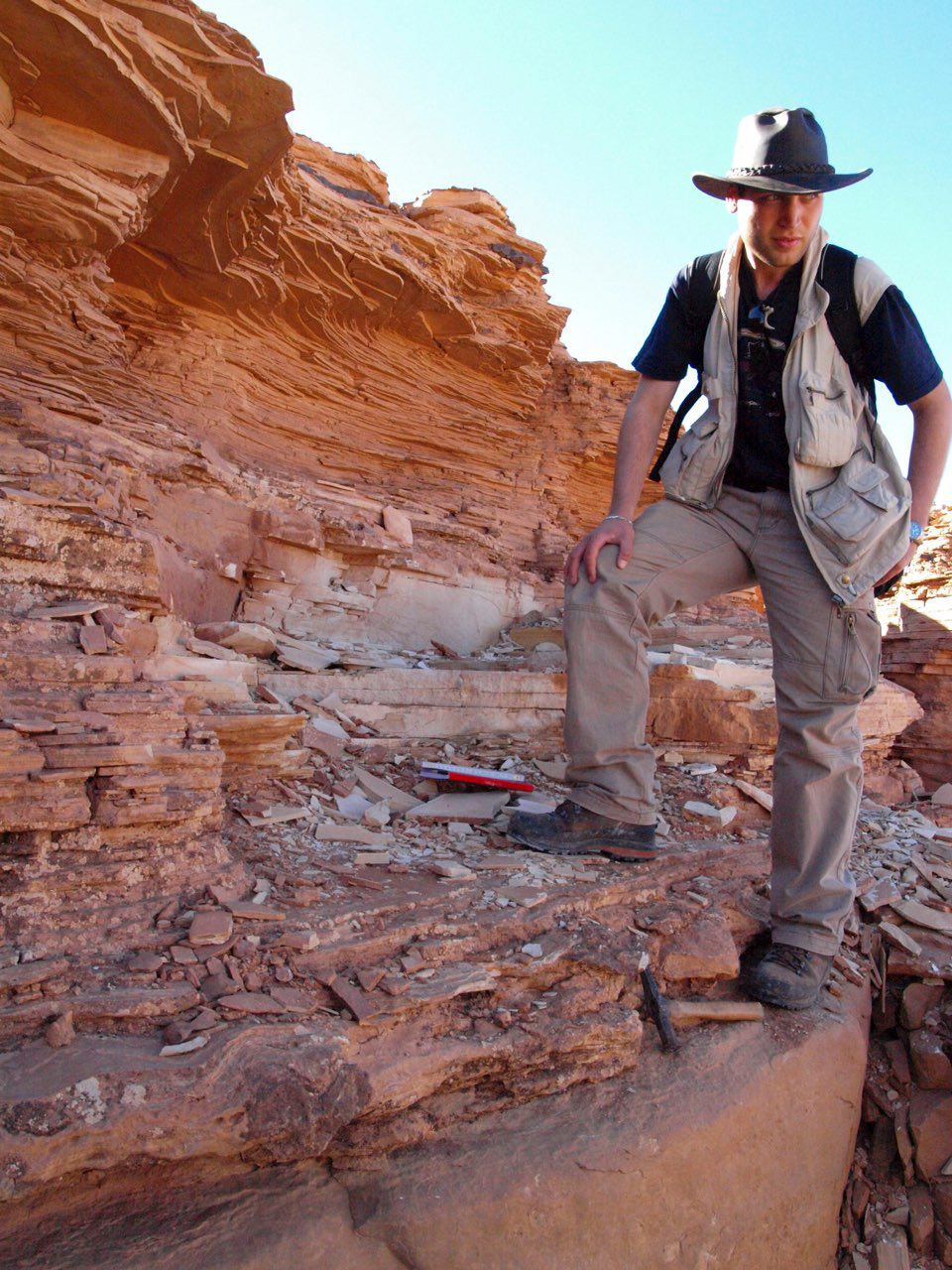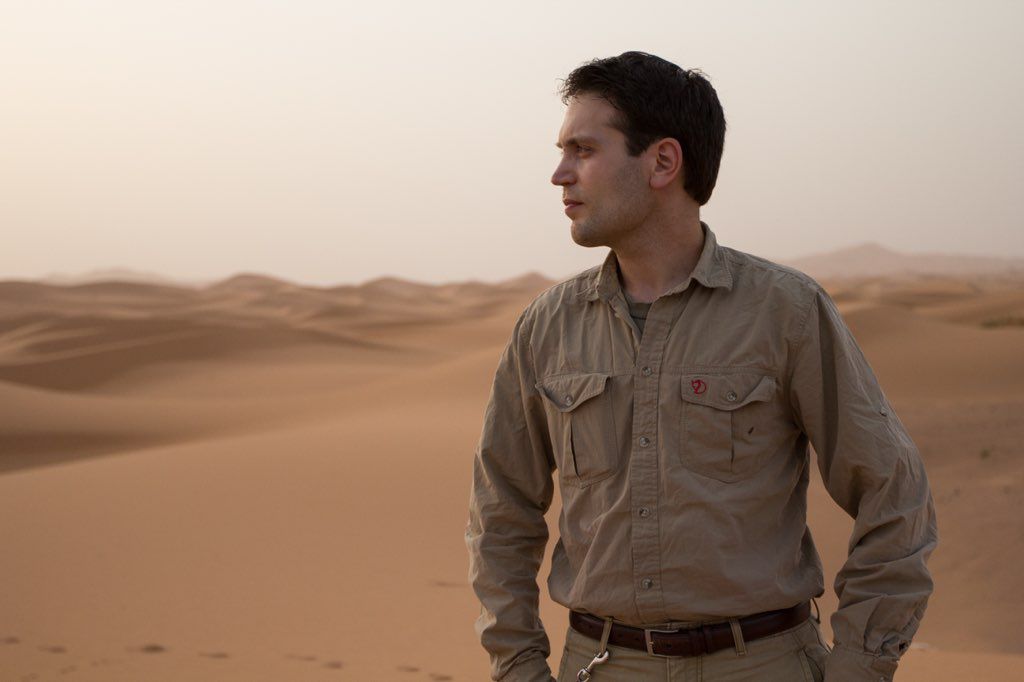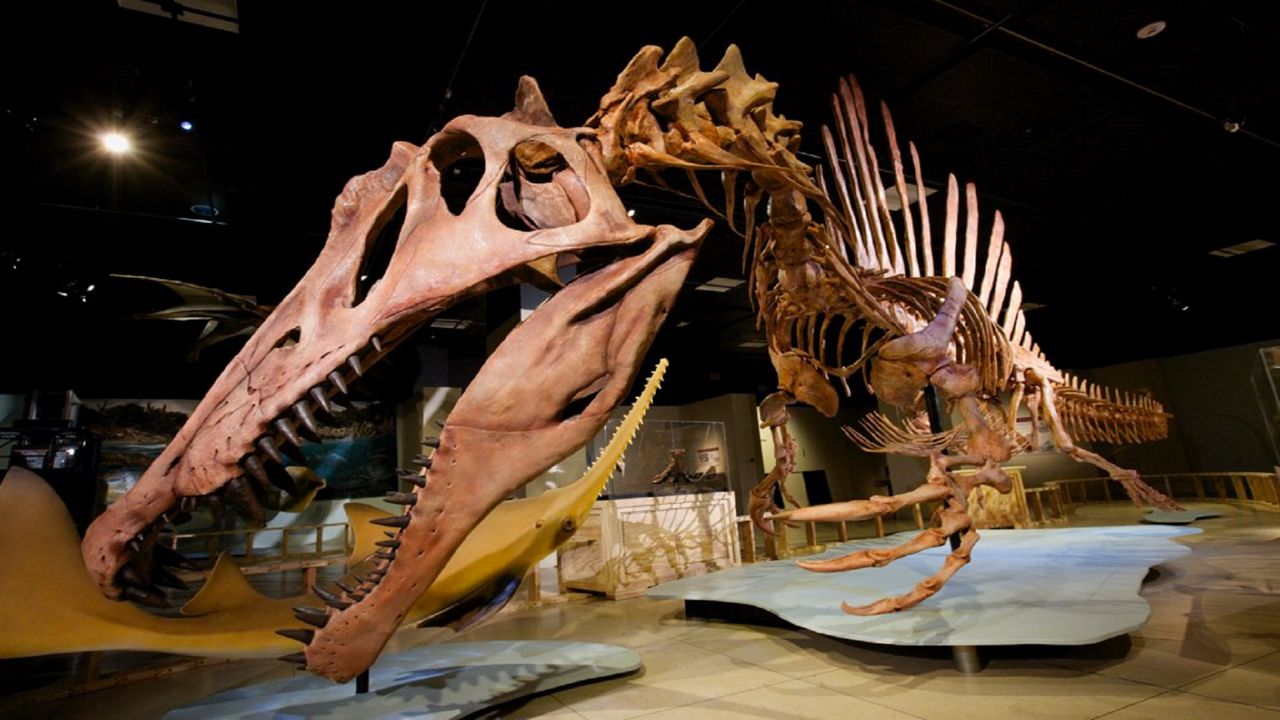APPLETON, Wis. — Good day, everyone. Today we have story time with the paleontologist and, well, let’s just put it this way. This is a story that, if you saw at the movie theater, you’d say: “You can’t be serious. This would never happen in real life.”
Well, take a seat. For in the world of amazing stories, this one’s a gold medalist.
First, let’s introduce you to Nazir Ibrahim, a paleontologist living near London who kicked off the National Geographic speaker series Monday at the Fox Cities Performing Arts Center (PAC).
What You Need To Know
- The Fox Cities Performing Arts Center in Appleton is offering a National Geographic speaker series for the first time
- Two more events are scheduled: "Secrets opf the Whales" (March 21) and "Nature Roars Back" (April 25)
- Get tickets and more information here
Years ago, when he was reading a book about dinosaurs to one of his children — and why wouldn’t he — and one that caught his eye was called the Spinosaurus. He learned a German paleontologist discovered it in the early 1900s. This was a biggie, measuring about 50 feet and had a sail-like back with long spines, some that were as tall as Tom Cruise. It was put in a museum in Munich, Germany, but was destroyed in a bombing raid during WWII.
This one-of-a-kind discovery was now lost forever.
But wait.
“I realized that this was essentially a paleontologist’s Holy Grail,” Ibrahim said.
So Ibrahim went to the Sahara Desert and started looking. At one point, a fossil hunter came by trying to sell a box of rocks with fossils embedded in them. Ibrahim nearly walked away, but one caught his eye, a purplish rock with a distinct whitish cross-section. So he bought the box of rocks and went home.

A year later, some colleagues summoned Ibrahim to the Natural History Museum in Milan, Italy. There in the basement was a partial dinosaur skeleton, donated by an Italian collector. Ibrahim took one look and his eyes nearly popped out of his head. He knew they were the bones of a Spinosaurus.
And once he looked at a piece of the spine, he saw it contained the same unique whitish cross-section of the purplish rock he was sold in the Sahara. He thought the rock he had might belong to the Spinosaurus bones laying before him.
He knew he had to return to the Sahara Desert to find the guy who sold him the box of rocks. But there was a problem. All he knew about the guy was he had a moustache.
“Well,” Ibrahim said. “I’m an optimist.
“I mean, there are about 50,000 local fossil hunters operating just in Morocco. And of course, the Sahara is a very big place. So it was a crazy idea. It was like Mission Impossible. But you know, I thought I have to at least try.”
So he contacted a colleague in Morocco who told him, “‘Really? You know, we don’t have a name. We don’t have a phone number or address. You’re going to just look for a guy with a moustache? Really?’” Ibrahim said
He also didn’t have any funding for the trip. And, yeah, his sales pitch to get backing was, ah, lacking.
“‘So what’s your goal?’” Ibrahim was asked.
“‘Well, we’re going to find this one guy in the Sahara and we know he has a mustache,’” he said. “So, it was a little tricky.”
But National Geographic came through and cut him a check.
So that was Mission Impossible. Now, it was time for Mission Impossible II.
It was on the last day of the 10-day trip when all hope seemed lost and Ibrahim and his colleagues were sitting at a café sipping tea.

As Ibrahim lifted his head, out of the corner of his eye, he saw someone he thought looked familiar.
“And yes, I got up and caught up with him,” he said. “He was walking fast. And it was a little surreal. It was like a dream, right? I was like, ‘Did that just happen?’ But after just a few seconds, it became clear that this was the man I’d been looking for.”
The man did not want to reveal the spot where he found the fossil. So Ibrahim put on his salesman hat and told him, as a scientist, it was important to have this contextual information. And he ensured him they would return the skeleton to Morocco so young people could see it, where it was found, and hopefully be inspired.
“He thought about it for a minute and just looked into the horizon,” said Ibrahim. “And then he said, ‘OK, I’ll show you.’”
Rahim said they had to move “10s of tons of rock” to reach the bone-bearing layer, where they found even more than expected.
“Of course, when you’re excavating these bones, you pick up one of the tail bones, for example, and you realize, ‘Wow, this is the only tailbone of this dinosaur in the world.’
“So you just kind of pick these things up and you go like, ‘Well, better not drop it.’”
Maria Van Laanen, president and CEO of the Fox Cities PAC, said she hopes the National Geographic speaker series will become a staple in the future.
“We want to be able to present different topics to provide an opportunity for our community to engage with different parts of the world, to different periods in our history, so that we can continue learning,” she said. “And, again, spark that wondering, that curiosity about how that impacts how we go about life today.”
When he looks back, Ibrahim said he was both satisfied, grateful, and worried after finding the Holy Grail.
“It’s an interesting experience for a young scientist, because you kind of go like, ‘How can I possibly top this?’ he said. “I mean, is it only gonna go downhill from here?”
It doesn’t appear so.
“I don’t want to reveal too much,” he said. “But I can tell you, we found many other incredible things in the Sahara over the last couple of years. An incredible prehistoric menagerie, including one really, really big discovery.
“I can’t tell you much about this one, but I’m just gonna give you a teaser. It’s really, really big in every possible meaning of the word. It’s so big that you can actually see it from space. And so that’s all I’m going to tell you.”
So stay tuned. One day, Ibrahim may have a tale that could somehow top this story.
Story idea? You can reach Mike Woods at 920-246-6321 or at: michael.t.woods1@charter.com



